Potřebujeme váš souhlas k využití jednotlivých dat, aby se vám mimo jiné mohly ukazovat informace týkající se vašich zájmů. Souhlas udělíte kliknutím na tlačítko „OK“.
ASTM E1495/E1495M-12
Standard Guide for Acousto-Ultrasonic Assessment of Composites, Laminates, and Bonded Joints
Automaticky přeložený název:
Standardní příručka pro akusticko-ultrazvukové posuzování kompozity, lamináty a lepených spojů
NORMA vydána dne 15.6.2012
Informace o normě:
Označení normy: ASTM E1495/E1495M-12
Poznámka: NEPLATNÁ
Datum vydání normy: 15.6.2012
Kód zboží: NS-41962
Počet stran: 9
Přibližná hmotnost: 27 g (0.06 liber)
Země: Americká technická norma
Kategorie: Technické normy ASTM
Kategorie - podobné normy:
Anotace textu normy ASTM E1495/E1495M-12 :
Keywords:
acoustic emission, acousto-ultrasonics, bonded joints, composites, laminates, materials characterization, mechanical properties assessment, nondestructive evaluation, nondestructive testing, stress wave factor, ultrasonic attenuation, ICS Number Code 19.100 (Non-destructive testing), 83.180 (Adhesives)
Doplňující informace
| Significance and Use | ||||||||
|
General—Conventional ultrasonics should be considered first for the detection of overt flaws such as delaminations in composites. Thereafter, AU should be considered for composites that are proved to be free of major flaws or discontinuities. The AU method is intended almost exclusively for assessing the collective effects of dispersed defects and subcritical flaw populations. These are material aberrations that influence AU measurements and also underlie mechanical property variations, dynamic load response, and impact and fracture resistance. Specific Advantages—The AU method can be used to evaluate composite laminate and bond quality using access to only one surface as, for example, the exterior surface of pressure vessels. It is unnecessary to utilize angle beam fixtures because the method can always be applied with probes at normal incidence. The method can be applied using dry coupling with elastomer pads attached to the probes, and there is no need to immerse the examination object in water. General Applications—The AU method was devised to assess diffuse discontinuity populations and any associated changes of the mechanical properties of composites and composite-like materials. The AU method has been used to evaluate fiber-reinforced composites (6), composite laminates (7), filament-wound pressure vessels (8), adhesive bonds (9), paper and wood products (10), and cable and rope (11). The method has been shown to be particularly practical for assessing the strength of adhesively bonded joints. It has also been shown to be useful for assessing microporosity (12), micro-cracking (13), hydrothermal aging (14), and damage produced by impacts (15) and fatigue (16). |
||||||||
| 1. Scope | ||||||||
|
1.1 This guide explains the rationale and basic technology for the acousto-ultrasonic (AU) method. Guidelines are given for nondestructive evaluation (NDE) of flaws and physical characteristics that influence the mechanical properties and relative strength of composite structures (for example, filament-wound pressure vessels), adhesive bonds (for example, joints between metal plates), and interlaminar and fiber/matrix bonds in man-made composites and natural composites (for example, wood products). 1.2 This guide covers technical details and rules that must be observed to ensure reliable and reproducible quantitative AU assessments of laminates, composites, and bonded structures. The underlying principles, prototype apparatus, instrumentation, standardization, examination methods, and data analysis for such assessments are covered. Limitations of the AU method and guidelines for taking advantage of its capabilities are cited. 1.3 The objective of AU is to assess subtle flaws and associated strength variations in composite structures and bonded joints. Discontinuities such as large voids, disbonds, or extended lack of contact at interfaces can be assessed by other NDE methods such as conventional ultrasonics. 1.4 Additional information may be found in the publications cited in the list of references at the end of this guide. The referenced works provide background on research, applications, and various aspects of signal acquisition, processing, and interpretation. 1.5 Units—The values stated in either SI units or inch-pound units are to be regarded as standard. The values stated in each system may not be exact equivalents; therefore, each system shall be used independently of the other. Combining values from the two systems may result in non-conformance with the standards. 1.6 This standard does not purport to address all of the safety concerns, if any, associated with its use. It is the responsibility of the user of this standard to establish appropriate safety and health practices and determine the applicability of regulatory limitations prior to use. |
||||||||
| 2. Referenced Documents | ||||||||
|
Podobné normy:
Historická
1.8.2011
Historická
1.11.2012
Historická
15.6.2012
Historická
1.7.2009
Historická
1.11.2012
Historická
15.6.2012
Doporučujeme:
Aktualizace zákonů
Chcete mít jistotu o platnosti užívaných předpisů?
Nabízíme Vám řešení, abyste mohli používat stále platné (aktuální) legislativní předpisy.
Chcete vědět více informací? Podívejte se na tuto stránku.


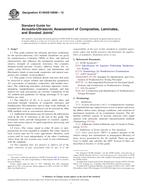
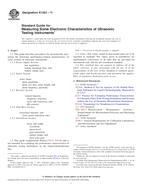 ASTM E1324-11
ASTM E1324-11 ASTM E1359-12
ASTM E1359-12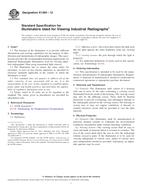 ASTM E1390-12
ASTM E1390-12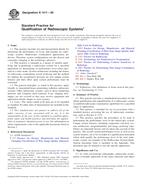 ASTM E1411-09
ASTM E1411-09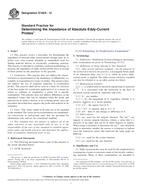 ASTM E1629-12
ASTM E1629-12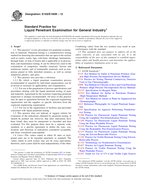 ASTM E165/E165M-12..
ASTM E165/E165M-12..
 Cookies
Cookies
